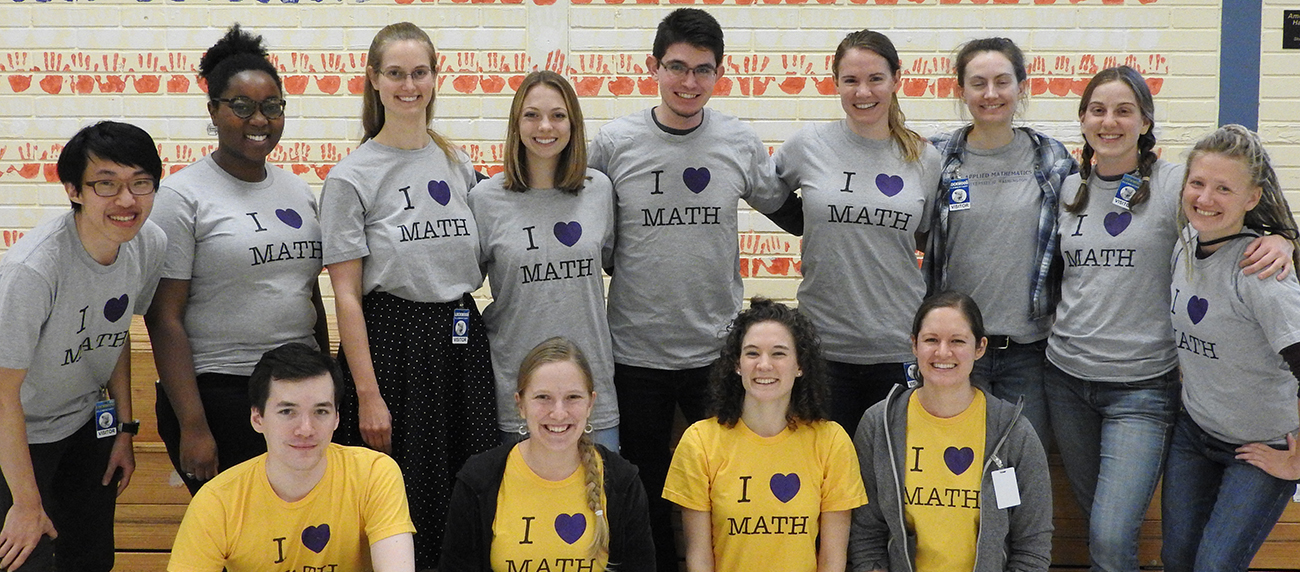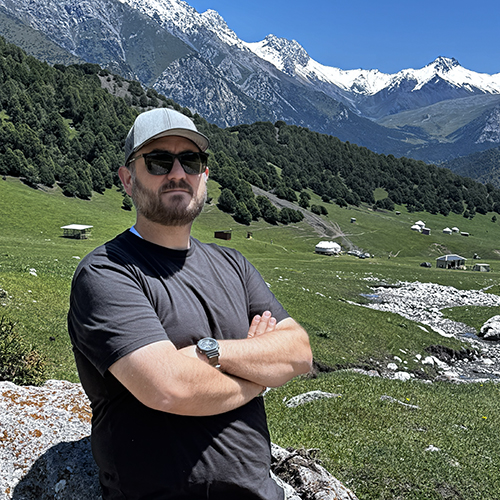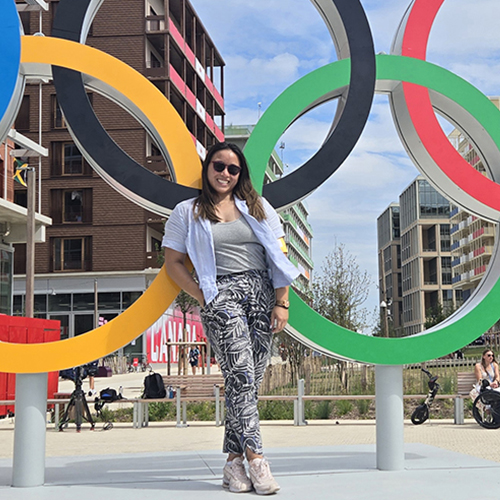“Connect this one to the bottom.” “No, it needs to go under that one!” “Wait. Put that one back!”
Four middle school students, wrestling a tangled web of plastic tubes, shout suggestions as they attempt to construct a large structure that mimics a small model they’ve been given. The activity is part of a Pi Day math fair at Northshore Middle School in Bothell, Washington, designed to highlight math concepts in creative ways. UW graduate students volunteered at the Pi Day event, as they have at other K-12 math fairs.

The UW volunteers are members of the Society for Industrial and Applied Mathematics UW (SIAM UW). Most are working toward doctorates in applied mathematics and welcome the opportunity to step back from their doctoral studies to share their love of mathematics with children. Each year they organize an annual math fair at Lockwood Elementary School in Bothell; other activities have ranged from a Girl Scout math fair to an event at Pacific Science Center to the recent Pi Day event.
“At these fairs, we try to do math activities that are easy to get into and easy to extend into something more interesting,” says applied mathematics graduate student Ryan Creedon, SIAM UW’s lead for math fair outreach. “Though our activities are accessible for all age groups, some have different levels to them so we can go a little bit further with the older students.”
The hope is that we can help instill a love of mathematics at an early age.
At Lockwood Elementary, where SIAM UW volunteers have been running the math fair for more than a decade, they lead four activities for grades 3 through 5. About 240 grade school students attend throughout the school day, 80 at a time, circulating from one activity station to the next in groups of 20.
“It’s organized chaos!” jokes Creedon. “At each station we have 15 minutes to introduce a concept, implement it, and make it engaging enough that students want to stick with it. There’s a lot jam-packed into those 15 minutes, and trying to control 20 eight-year-olds is not easy. It’s a long day, but it’s a lot of fun.”
The UW team usually plans at least one physical activity, one craft activity, and a game or puzzle. All are designed to inch students toward a greater understanding of foundational math concepts. To demonstrate the concept of fractals and infinity, for example, they might have students draw a Sierpinksi triangle, made up of triangles within triangles within triangles ad infinitum. Fifth graders build a more complex 3D Sierpinski pyramid, with each student making a small tetrahedron that becomes part of the giant structure.

The UW team believes that showing the fun side of mathematics in elementary school is important, since studies have shown a noticeable decline in interest in mathematics in middle school. “Little kids are impressionable and easily excited by so many things,” says Creedon. “They still really enjoy mathematics. The hope is that we can help instill a love of mathematics at an early age that might help offset the difficulties they are going to face when they enter middle school.” Those difficulties, Ryan says, include the transition from arithmetic to algebra — from numbers to variables — and an increasing emphasis on standardized tests, which leads students to focus more on getting the "right’"answer than experimenting with ideas.

All of which makes the middle school Pi Day event all the more important. Sunil Khilnani, Math Club adviser at Northshore Middle School, dreamed up the event with the goal of focusing on real-world mathematics while expanding on concepts familiar to the students. Khilnani, whose daughter is a seventh grader at the school, was aware of the outreach work of SIAM UW and contacted the group for guidance. “It became obvious that we needed experts who have done this before, to leverage their knowledge of what works and what does not work,” Khilnani says. “The UW SIAM students went beyond the initial ask to also mentor students in our Math Club who were interested in presenting activities themselves.”
The event’s biggest draw was an activity led by the graduate students that challenged middle schoolers to construct tensegrites — free-standing structures that hold together through the tension between strings and rods that make up the structure. Other popular activities included The Monty Hall Problem, which initially appears to be a guessing game but evolves into a lesson about probability.
Creedon never tires of seeing young students engage with math problems. And yet he believes the UW graduate students gain as much from the experience as the K-12 participants. “As PhD students, our teaching is limited to undergraduate students,” he explains. “Interacting with little kids taps into other aspects of teaching. We use different techniques, which can inspire us to adapt them to our work with undergraduates.
“I believe that doing all these different activities will help me be a better professor in the long run,” Creedon continues. “We’ll see how that pans out. First I have to graduate.”
More Stories

Through Soil Science, an Adventure in Kyrgyzstan
Chemistry PhD alum Jonathan Cox spent most of 2025 in Kyrgyzstan, helping farmers improve their soil—and their crops—through soil testing.

A Sports Obsession Inspires a Career
Thuc Nhi Nguyen got her start the UW Daily. Now she's a sports reporter for Los Angeles Times, writing about the Lakers and the Olympics.

A Healing Heart Returns
In February, the UW Symphony will perform a symphony that Coast Salish elder Vi Hilbert commissioned years ago to heal the world after the heartbreak of 9/11. The symphony was first performed by the Seattle Symphony in 2006.